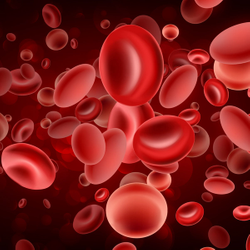Isatuximab Combo Yields MRD-Negative Responses in Transplant-Eligible NDMM
Nearly all patients in the per-protocol population of the MIDAS study achieved a very good partial response or better following study treatment.
“We found that this induction induced exceptionally high response and MRD negativity rates at 10-5, but also at 10-6," according to study author Aurore Perrot, MD, PhD.

Responses and minimal residual disease (MRD) negativity were achieved among patients with transplant-eligible newly diagnosed multiple myeloma who received induction isatuximab-irfc (Sarclisa) plus carfilzomib (Kyprolis), lenalidomide (Revlimid), and dexamethasone (Isa-KRd), according to data from the phase 3 IFM2020-02 MIDAS study (NCT04934475) presented at the 21st Annual International Myeloma Society Meeting and Exposition.
Findings showed that among the 757 patients who completed 6 cycles of Isa-KRD, the overall response rate (ORR) rate was 95%. In the intent-to-treat (ITT) population, 92% of patients had a very good partial response (VGPR) and 64% to 66% of patients achieved near complete response (nCR)/complete response (CR). In the per-protocol population (PP), 99% of patients achieved a VGPR or better and 69% to 71% of patients achieved nCR/CR.
A total of 751 patients had post-induction MRD and in the ITT population, the MRD negativity rate was 63% at 10-5 and 47% at 10-6, which was 66% and 50%, respectively, in the PP population.
“We found that this induction induced exceptionally high response and MRD negativity rates at 10-5, but also at 10-6.” said Aurore Perrot, MD, PhD, associate professor in hematology at the University of Toulouse, France, during a presentation of the data. “These rates are the highest reported to date; regarding MRD negativity at 63%, it is favorably compared to CASSIOPEIA [NCT02541383], GRIFFIN [NCT02874742], and IsKia [NCT03104842] at 4 years.”
During induction, 7 patients experienced disease progression, and 5 died. Of these, 1 death was due to disease progression, 2 were from cardiac adverse effects (AEs), and 2 resulted from other AEs. The most common grade 3 or grade 4 AEs reported were neutropenia in 25% of patients, thrombocytopenia in 5%, and infections in 7%. Peripheral neuropathy was observed in 6% of patients, with most cases being grade 1 or grade 2. Additionally, no new safety signals were observed.
Behind the Phase 3 MIDAS Trial
The phase 3 MIDAS trial is an ongoing study where investigators are evaluating an MRD-adapted consolidation and maintenance strategy following Isa-KRd induction. Patients will be separated into standard-risk and high-risk groups based on MRD negativity or positivity at 10-5 threshold post-induction. Those with standard risk will be randomly assigned to consolidation Isa-KRd with or without autologous stem cell transplant (ASCT) followed by lenalidomide maintenance. Those with high risk will be randomly assigned to receive ASCT plus Isa-KRd or tandem ASCT followed by isatuximab plus iberdomide as maintenance.
“The role of upfront transplant remains a topic of debate, and to date, no prospective trials have compared upfront transplant vs no transplant following quadruplet induction. We are convinced that risk-adapted strategies are needed,” said Perrot.
Eligible patients aged under 66 years underwent 6 cycles of 28-day treatment with Isa-KRd, consisting of isatuximab 10 mg/kg administered weekly for the first 4 weeks, then biweekly, carfilzomib at a dose of 20 mg/m² on day 1 of cycle 1, escalating to 56 mg/m² on days 1, 8, and 15, lenalidomide 25 mg daily from days 1 to 21, and dexamethasone 40 mg per week.
Cytogenetic risk was evaluated at diagnosis through next-generation sequencing (NGS), with a linear predictor (LP) score indicating high risk if it exceeded 1, based on factors including del(17p), t(4;14), del(1p32), gain 1q, trisomy 21, and trisomy 5. Peripheral stem cells (PSCs) were harvested after 3 cycles using G-CSF and plerixafor for mobilization. The response to treatment was assessed according to International Myeloma Working Group criteria, and MRD was measured using NGS techniques.
A total of 791 patients were enrolled across 72 centers between December 2021 and July 2023. The median patient age was 58.7 years (range, 25.4-66), the majority of patients were male (57%), and 61 patients (8%) met only SLiM criteria. Disease was classified as international staging system (ISS) stage III in 99 patients (13%) and as revised (R)-ISS stage III in 43 patients (5%). The t(11;14) translocation was found in 8% of patients. Only 5 patients had extramedullary disease at diagnosis, with 700 evaluated by PET-CT, and 53 patients (7%) had circulating plasma cells. “MRD status after induction was not consistently aligned with initial cytogenetic risk,” Perrot noted.
All 791 enrolled patients began Isa-KRd induction, with 766 (97%) receiving at least 1 course of PSC mobilization and 761 (99%) undergoing at least 1 apheresis over a median of 2 days. The median number of collected cells was 7 x 10-6 CD34-positive/kg, enabling the possibility of tandem transplantation in 721 patients.
“Longer follow-up is needed to further understand the significance of achieving MRD negativity in some particular subgroups,” concluded Perrot.
Reference
Perrot A, Touzeau C, Lambert J, et al. Efficacy and safety of Isa-KRd induction before response-adapted consolidation in transplant eligible newly diagnosed multiple myeloma: an interim analysis of the IFM2020-02 MIDAS study. Presented at: 2024 International Myeloma Society Annual Meeting; September 25-28, 2023; Rio de Janeiro, Brazil. Abstract OA-54